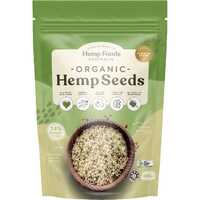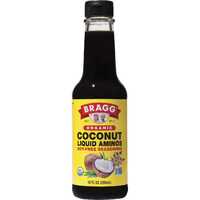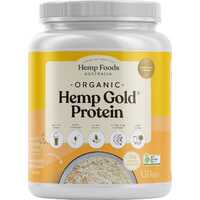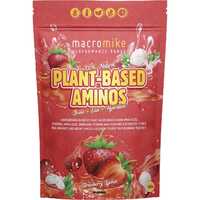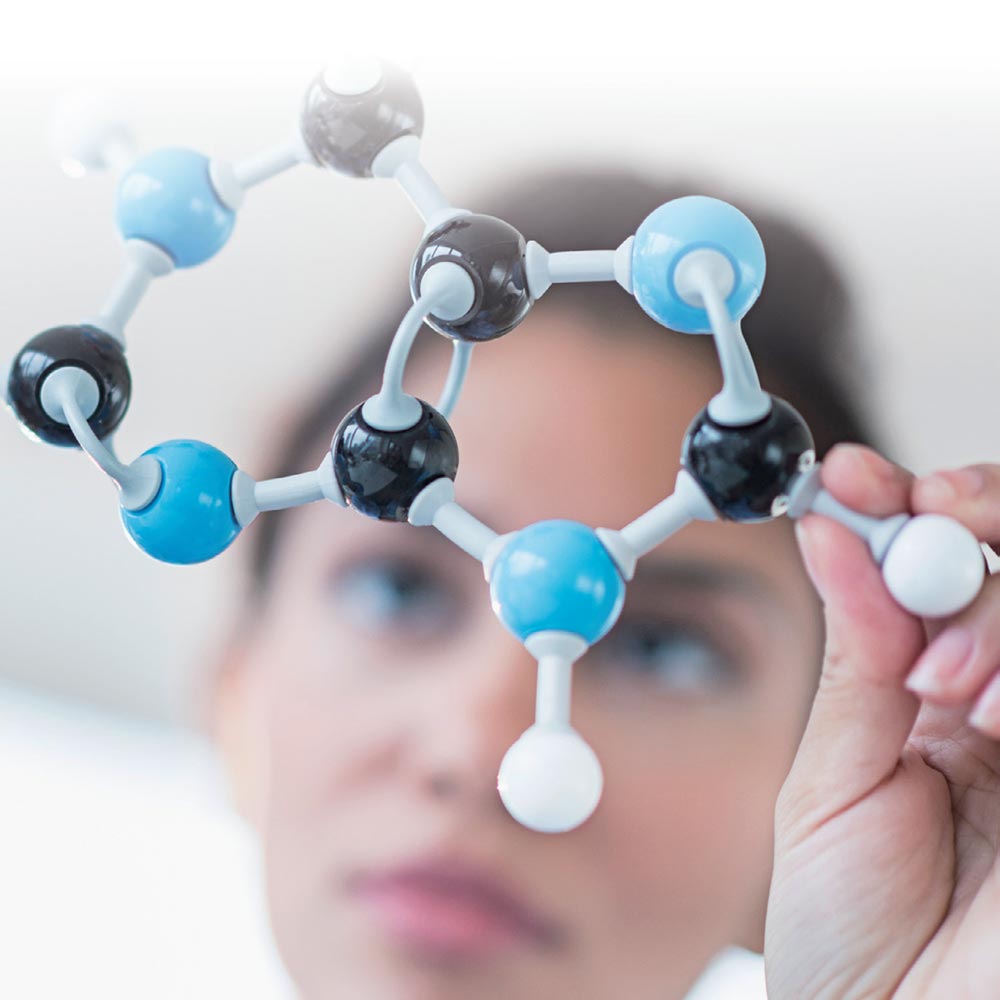Amino acids are not called the "building blocks of life" for nothing. These essential compounds combine inside your body to form proteins, which are used to fuel critical cell functions, support healing and promote growth. Amino acids are found naturally in the human body, and they're also present in many foods. In fact, there is a list of 20 "essential" amino acids that can only be obtained by eating amino-rich foods or taking amino acid supplements.
There are many ways to ingest amino acids and supercharge your health, from fresh, natural foods to plant-based amino supplements and liquid amino extracts. Let's review the ins and outs of amino acids, analyse their physiological functions, and list the best natural way to get these essential compounds into your body. If you want to support your health and well-being, amino acids are a critical piece of the puzzle.
The Composition of The Human Body
To understand the important role of amino acids, it's essential to have a basic understanding of the human body. Human beings are made of many things, with our physical composition typically analysed either by chemistry or molecule types. In terms of chemical elements, 99% of the human body consists of oxygen, carbon, hydrogen, nitrogen, calcium, and phosphorus. The other 1% consists mainly of potassium, sulphur, sodium, chlorine, and magnesium — and all 11 elements are essential for life.
However, chemistry does not help describe physiological functions — molecule types are much more illuminating. In terms of molecules, the human body consists of 65% water, 20% protein, 12% lipids, and lots of other stuff like carbohydrates, hydroxylapatite, and DNA. These basic compounds differentiate into muscles, fats, nerves, connective tissue, and body fluids, among many other things. Countless microorganisms live inside your body, with these symbionts huge in number but extremely small in size.
While these elements are essential to human life, some compounds play a much more active role than others. Proteins are the perfect example, as these complex and highly-productive molecules are made from amino acid chains. They do the vast majority of work in your cells and are integral to the structure of your tissues and organs. Proteins are located throughout human cells, but they have a special relationship with DNA inside the cell nucleus.
DNA contains the genetic information of all living organisms. This linear polymer stores genetic data in a unique double helix shape, which unwinds as RNA whenever a particular protein is called for. DNA is the code, RNA is the translation template, and protein is the active compound that does most of the actual work. While proteins are not actually made from DNA, they are made from instructions stored in DNA. In terms of actual composition, proteins are created from amino acids.
What are Amino Acids?
Amino acids are organic compounds that consist of carbon, hydrogen, oxygen, and nitrogen, among other elements. There are over 500 naturally occurring amino acids, but only 20-22 (depending on how they are defined) appear in the genetic code. All life on Earth is based on these few amino acids, which DNA codes specifically to form proteins. While the reason for these select 20-22 amino acids has long been opaque, scientists have recently cracked the puzzle, at least to a certain extent.
Amino acid molecules are classified into three groups: essential amino acids, nonessential amino acids, and conditional amino acids.
- There are just nine essential amino acids that the body can't make and need to be consumed. These aminos are histidine, isoleucine, leucine, lysine, methionine, phenylalanine, threonine, tryptophan, and valine.
- In contrast, the body can produce nonessential amino acids or consume them. These aminos include alanine, arginine, asparagine, aspartic acid, cysteine, glutamic acid, glutamine, glycine, proline, serine, and tyrosine.
- Conditional amino acids are not essential under normal conditions, but they are needed in the event of illness or stress. Conditional aminos include arginine, cysteine, glutamine, tyrosine, glycine, ornithine, proline, and serine.
All life on Earth is based on these 20-22 amino acids, so they're essential. However, while these aminos are needed to make proteins, we can only synthesise around half of them. While this might seem inefficient, it is actually an evolutionary advantage. By relying on the environment to provide these building blocks, we can reduce energy expenditure. However, this also creates a dependency, with human beings utterly reliant on the world around us to stay alive.
How are Amino Acids Used?
Amino acids play a wide range of roles in the human body. Due to their status as a "building block", they are an important component of every single cell. Amino acids are needed to produce neurotransmitters, regulate hormones, and promote the healthy growth of muscles. They also assist in various other cellular processes, many of which are integral to human survival. While listing every single application would be impossible, the following roles are particularly important:
- Providing energy
- Regulating digestion
- Repairing body tissue
- Supporting body growth
- Producing hormones
- Regulating sleep cycles
- Supporting the immune system
- Producing neurotransmitters
- Balancing mood and well-being
Essential and nonessential amino acids are both needed to perform these important functions. While nonessential aminos can be produced indirectly by the body, the nine essential amino acids must be consumed as part of a healthy diet. While you don't need to consume these compounds at every meal, balanced consumption is integral to good health.
Essential Amino Acids in Your Diet
Proteins are constantly being degraded, and therefore they need to be synthesised continuously. You turn over more protein daily than you consume, with amino acids often reutilised during protein metabolism. However, some amino acids are lost during this process as nitrogen and nitrogenous products are excreted by the body and turned into skin, hair, and nails. It doesn't matter how old you are; a regular supply of dietary amino acids is essential to replace these losses.
If you have an inadequate level of essential amino acids in your body, you may experience low energy, reduced appetite, nausea, and clinical symptoms. Many physical and mental health issues are linked with reduced essential amino acid intake, including fatigue, insomnia, depression, and anxiety. Large-scale amino acid deficiencies have been noted in some poorer parts of the world and identified in elderly adults with inadequate levels of care. A healthy diet can provide you with adequate amino acids, with supplements often consumed to promote full coverage at an optimal ratio.
What Foods Have the 9 Essential Amino Acids?
As the building blocks of protein, healthy protein-based foods are the key to adequate amino acid consumption. Foods that contain all nine aminos are known as complete proteins, including beef, poultry, fish, eggs, dairy, soy, quinoa, and buckwheat. Foods that contain some of the nine aminos are known as incomplete proteins, including nuts, seeds, beans, and some grains. The nine essential amino acids are present in many food sources, and they can also be consumed via supplements. While eating healthy meals is the key to good health, nutritional supplements can help to promote the right balance of amino acids in your daily diet.
Let's review the nine essential amino acids and list some of their best sources:
- Histidine produces a neurotransmitter called histamine, which is integral to immune system function, digestion, sleep cycles, and sexual function. Histidine levels are high in meat, fish, dairy products, nuts, legumes, eggs, eggplant, avocado, tomatoes, olives, and beans.
- Isoleucine is involved with muscle metabolism, immune system function, energy regulation and hemoglobin production. Isoleucine levels are high in beef, pork, chicken, fish, tofu, dairy, beans, lentils, whole grains, nuts, seeds, and peas.
- Leucine helps your body produce growth hormones, grow muscle, repair tissue, heal wounds, and regulate blood sugar levels. Great leucine-rich foods include chicken, salmon, brown rice, eggs, chickpeas, soybeans, navy beans, nuts, beef, and peanut butter.
- Lysine is needed to produce hormones and regulate energy levels. It's also central to calcium production and immune system function. You can find high levels of lysine in most meats, including red meat, pork, and poultry. It's also found in parmesan cheese, eggs, soybeans, and spirulina.
- Methionine plays a central role in metabolism, detoxification, and tissue growth. It also regulates the absorption of essential minerals like zinc and selenium. Animal-based sources of methionine include tuna, salmon, beef, and lamb. Plant-based sources include soybeans, tofu, beans, lentils, and Brazil nuts.
- Phenylalanine is involved in producing neurotransmitters like dopamine, epinephrine, and norepinephrine. It also supports the production of other amino acids. Phenylalanine can be found in the usual protein-containing suspects, such as milk, eggs, cheese, nuts, soybeans, beans, meat, and fish
- Threonine regulates collagen and elastin production in your skin and connective tissue. It also helps prevent bleeding, metabolise fats, and support immune system function. Animal-based sources of threonine include beef, lamb, pork, and cheese. Plant-based sources include tofu, sunflower seeds, flaxseeds, cashews, almonds, and pistachios.
- Tryptophan supports nitrogen balance throughout your body. It also helps produce the neurotransmitter serotonin, which regulates your appetite, mood, and sleep cycles. Natural sources of tryptophan include oats, cheese, nuts seeds, tuna, turkey, chicken, and milk.
- Valine helps to enhance energy production, promote muscle growth, and support tissue repair. You can find high valine levels in many animal and plant-based foods, including beef, pork, chicken, fish, tofu, beans, yogurt, seeds, nuts, and whole grains such as oatmeal.
Amino acids play a central role in a vast range of physiological functions. As the basic building blocks of protein, they are essential in every diet. Besides eating well and moving regularly, supplements can play a powerful role in regulating and balancing amino acids. At Healthy Being, we stock a large variety of amino-rich products, including superfood powders, plant-based amino blends, and protein-rich foods to fuel your body and support your growth. Check out our products to supercharge your health today!


 Certified Organic
Certified Organic Vegan Friendly
Vegan Friendly  Vegetarian
Vegetarian Organic Ingredients
Organic Ingredients Dairy Free
Dairy Free Gluten Free
Gluten Free Keto Friendly
Keto Friendly
























